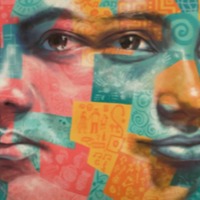
Robin Flemming
There are an estimated 403,000 people living in modern slavery in the United States (GSI 2018). Sex trafficking exists throughout the country. Traffickers use violence, threats, lies, debt bondage and other forms of coercion to compel adults and children to engage in commercial sex acts against their will. The situations that sex trafficking victims face vary, many victims become romantically involved with someone who then forces them into prostitution. Others are lured with false promises of a job, and some are forced to sell sex by members of their own families. Victims of sex trafficking include both foreign nationals and US citizens, with women making up the majority of those trafficked for the purposes of commercial sexual exploitation. In 2015, the most reported venues/industries for sex trafficking included commercial-front brothels, hotel/motel-based trafficking, online advertisements with unknown locations, residential brothels, and street-based sex trafficking. Robin Flemming was 20 years old when she met a man who seemed like everything she was looking for. He was loving, caring and promised her the world. It wasn’t until she moved to Texas to live with him that he began using her for profit. Flemming’s trafficker, whom she now refers to as “the monster,” brought her to a club one day and told her she was going to audition to be a dancer. During her first night of dancing, she earned $3,000. Throughout their marriage, they moved across the country and lived in more than six states. Flemming said her trafficker abused her verbally and mentally, raped her numerous times and occasionally kicked out of her home, leaving her with no place to go. After secretly stashing money at work, Flemming raised about $10,000, which she used to escape from her trafficker. She went to work one day and decided that she would not come back. It wasn't until two and a half years later that her trafficker finally started leaving her alone. Flemming was able to divorce her trafficker in 2007, a year after she saw him for the last time. She then had to work to get her life back to normal. Flemming stayed in exotic dancing for six more years. After counseling, continuous nightmares and a year of being sober, her life has returned to normal. She now lives in Columbia with her husband and daughter and runs a day-care. She is currently trying to repair her relationship with her other daughter, who also lives in Columbia and is married.
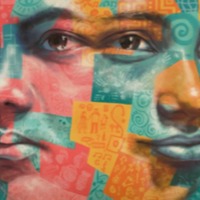
Monica
There are an estimated 403,000 people living in modern slavery in the United States (GSI 2018). Sex trafficking exists throughout the country. Traffickers use violence, threats, lies, debt bondage and other forms of coercion to compel adults and children to engage in commercial sex acts against their will. The situations that sex trafficking victims face vary, many victims become romantically involved with someone who then forces them into prostitution. Others are lured with false promises of a job, and some are forced to sell sex by members of their own families. Victims of sex trafficking include both foreign nationals and US citizens, with women making up the majority of those trafficked for the purposes of commercial sexual exploitation. In 2015, the most reported venues/industries for sex trafficking included commercial-front brothels, hotel/motel-based trafficking, online advertisements with unknown locations, residential brothels, and street-based sex trafficking. Monica was trafficked for commercial sexual exploitation in the state of Nebraska. She talks about the importance of removing stigma and having conversations to raise awareness about what can lead to human trafficking. In terms of supporting those who have been trafficked, Monica puts emphasis on access to health care, social services, juvenile justice, the education system and transportation
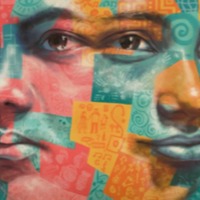
Tatiana
Though Europe has the lowest regional prevalence of modern slavery in the world, it is estimated that 17,500 people are enslaved in the Netherlands. Enslaved people within Europe originate predominantly from Eastern European countries, with forced labour and commercial sexual exploitation remaining the most commonly reported forms of slavery. Cases of forced labour have been reported across Europe in agriculture, forestry, fishery, construction, catering, the textile industry and domestic work. Within cases formally identified by EU authorities the largest proportion of registered human trafficking victims were female, making up around 80% of all victims. Tatiana travelled to the Netherlands with her boyfriend to find work. Upon arrival they were met by who she though was her boyfriend’s friend and taken to a flat where they were going to stay. However, when she got to the flat she was told he had been sold to work as a prostitute. Threatening her family if she refused, Tatiana was forced to work as a prostitute in Amsterdam for 6 months.

Marcela
Sex trafficking remains prevalent in Mexico with the city of Tenancingo, Tlaxcala being dubbed the sex trafficking capital of the world. Women and young girls are often manipulated into 'love relationships' with local men who earn their trust and then trap them into forced prostitution. NGOs have revealed that the commercial sexual exploitation of Mexican girls occurs on a daily basis. Marcela tells of how she was tricked into one of these ‘love relationships’ at 13 years old after being approached by a man at a bus stop. She describes how after moving in with him he sent her to meet a girl at a ‘hotel’ and was taught how to provide sex work. Though she had heard stories of girls being killed, after a couple of years Marcela was able to escape and accuse the trafficker who had tricked her into prostitution.

Laura
Sex trafficking remains prevalent in Mexico with the city of Tenancingo, Tlaxcala being dubbed the sex trafficking capital of the world. Women and young girls are often manipulated into 'love relationships' with local men who earn their trust and then trap them into forced prostitution. NGOs have revealed that the commercial sexual exploitation of Mexican girls occurs on a daily basis. Laura was 17 years old when she was seduced and deceived by a man who prostituted her for over a year. Telling her he was in love her this man persuaded Laura to live with him and after a while sent her to work with other girls at a ‘hotel’, keeping all the money she earned for himself. Laura was eventually rescued by a police operation.

Trisha
Trisha became more vocal in speaking out about the abuses of the sex industry after writing about the 2006-2007 murder trial of convicted serial killer Robert Pickton—most of whose victims were women in prostitution and many of whom were known to Trisha. In 2009 she founded EVE (formerly Exploited Voices now Educating), a volunteer, non-governmental, non-profit organization composed of former sex-industry women dedicated to abolishing prostitution as a form of violence against women. She is a leading activist in the campaign calling on the Canadian government to reform its prostitution laws so that women in prostitution are decriminalized and provided with much-needed services, while sex buyers, pimps and brothel owners are criminalized.
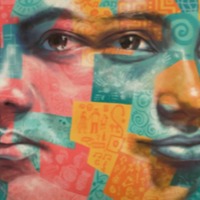
Sofia
Despite having the lowest regional prevalence of modern slavery in the world, Europe remains a destination, and to a lesser extent, a source region for the exploitation of men, women and children in forced labour and commercial sexual exploitation. According to the most recent Eurostat findings, European Union (EU) citizens account for 65 percent of identified trafficked victims within Europe. These individuals mostly originate from Eastern Europe, including Romania, Bulgaria, Lithuania and Slovakia. In Albania and Bosnia and Herzegovina, the European Parliament has identified corruption and the judicial system as reform challenges towards accession talks within the EU. In Greece, the turbulent economic situation has increased vulnerability for populations seeking employment and livelihood opportunities. Sofia describes being coerced into working abroad as a prostitute by her boyfriend, to help him buy drugs. She was later forced to work as a beggar and to steal, as well as sex work at different times.
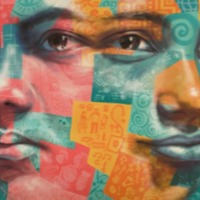
Nicoleta
Despite having the lowest regional prevalence of modern slavery in the world, Europe remains a destination, and to a lesser extent, a source region for the exploitation of men, women and children in forced labour and commercial sexual exploitation. According to the most recent Eurostat findings, European Union (EU) citizens account for 65 percent of identified trafficked victims within Europe. These individuals mostly originate from Eastern Europe, including Romania, Bulgaria, Lithuania and Slovakia. In Albania and Bosnia and Herzegovina, the European Parliament has identified corruption and the judicial system as reform challenges towards accession talks within the EU. In Greece, the turbulent economic situation has increased vulnerability for populations seeking employment and livelihood opportunities.Nicoleta’s account of her sexual exploitation makes clear the role of emotional attachment and manipulation between pimps and those they abuse and enslave.